Safety
Aerial Lift Safety at Versalift
At Versalift, operator safety is our top priority. For decades, we’ve invested in innovations that protect linemen and technicians in the most challenging environments.
Two of our most important safety systems are SlopeMax™ and TruGuard™—both designed to set new standards in aerial lift safety.
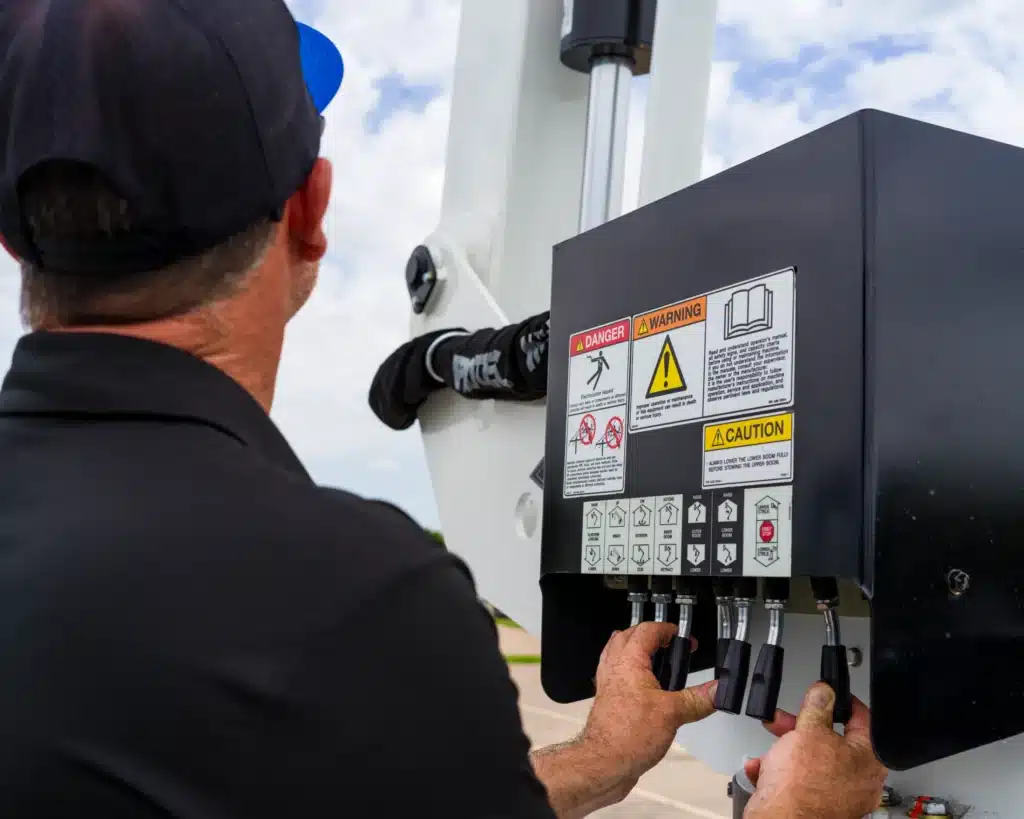
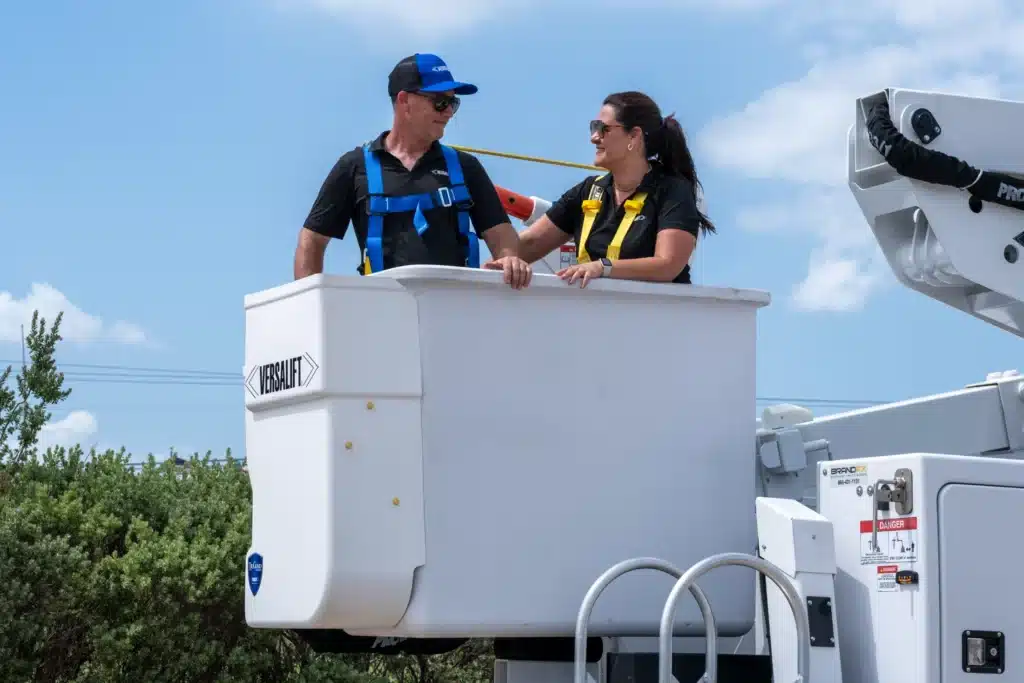
Bucket Truck Safety System
Working on uneven terrain has always been a challenge for bucket truck operators. Traditional ANSI guidelines limited safe operation to slopes of up to five degrees. With SlopeMax™, Versalift provides a smarter, safer solution.
SlopeMax™ is a passive safety system that uses sensors to measure slope angles and automatically limits boom functions when necessary. This allows operators to safely work on slopes between five and ten degrees, without compromising safety or stability.
Key benefits
- Increased productivity on uneven surfaces
- Reduced risk of unsafe or illegal operation
- Safer rentals, where operator skill levels may vary
SlopeMax™ is available on select SST and VST models, giving operators new confidence to work efficiently on challenging job sites.
Anything you can incorporate into a piece of equipment to provide safety is paramount. That’s what takes us home to our families. That’s what it’s all about.
Electric Power Distribution Lineman
Our goal is to bring the safest products to market. Safety should be expected, it should be free
Curt Howell, CEO
James Christian, VP Engineering, Versalift
TruGuard™ – A New Standard in Safety
The patented TruGuard™ safety system represents a breakthrough in aerial lift safety. It is the only true upper control isolation system in the industry, fully isolating the platform and tool outlets from an energized boom tip. This gives linemen unmatched dielectric protection while maintaining the preferred feel of durable metal handles with full hydraulic control.
TruGuard™ works like an airbag—always there if needed, without changing how the lift operates. Operators don’t require additional training, and the sealed design means virtually no maintenance is needed. Unlike older solutions, such as plastic handle covers, TruGuard™ provides complete, consistent protection that resists dirt, grime, and wear. It has been rigorously tested under extreme pressures and temperatures to deliver long-term reliability.
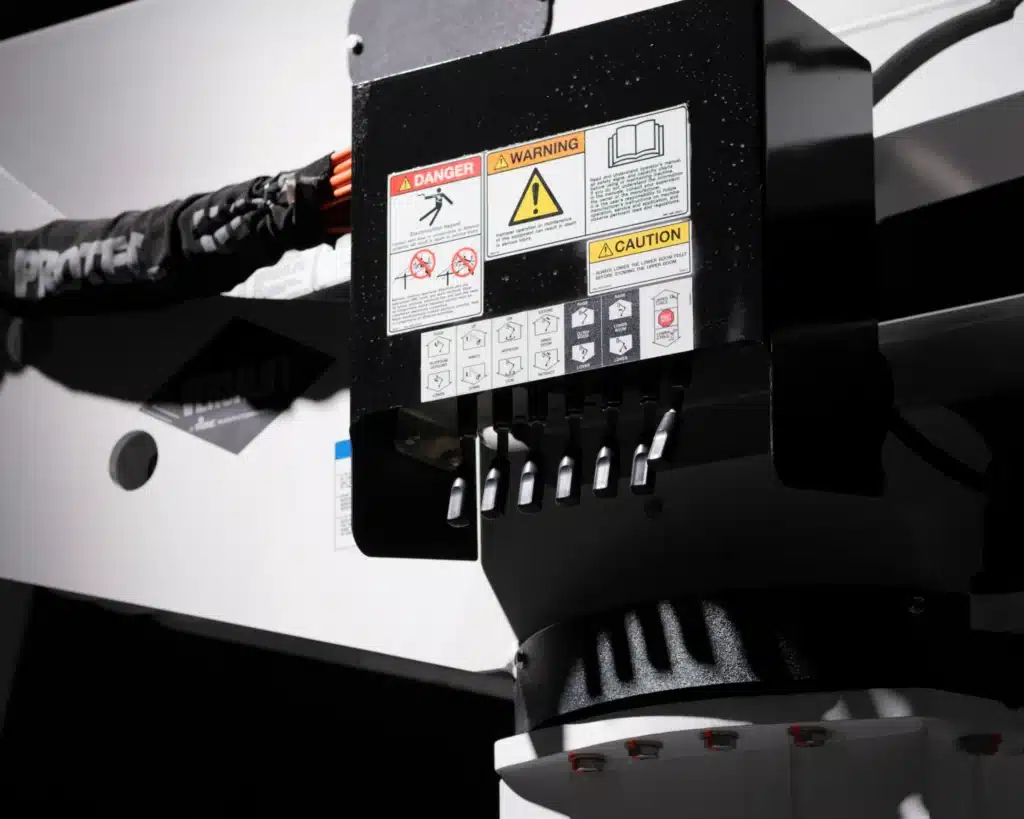
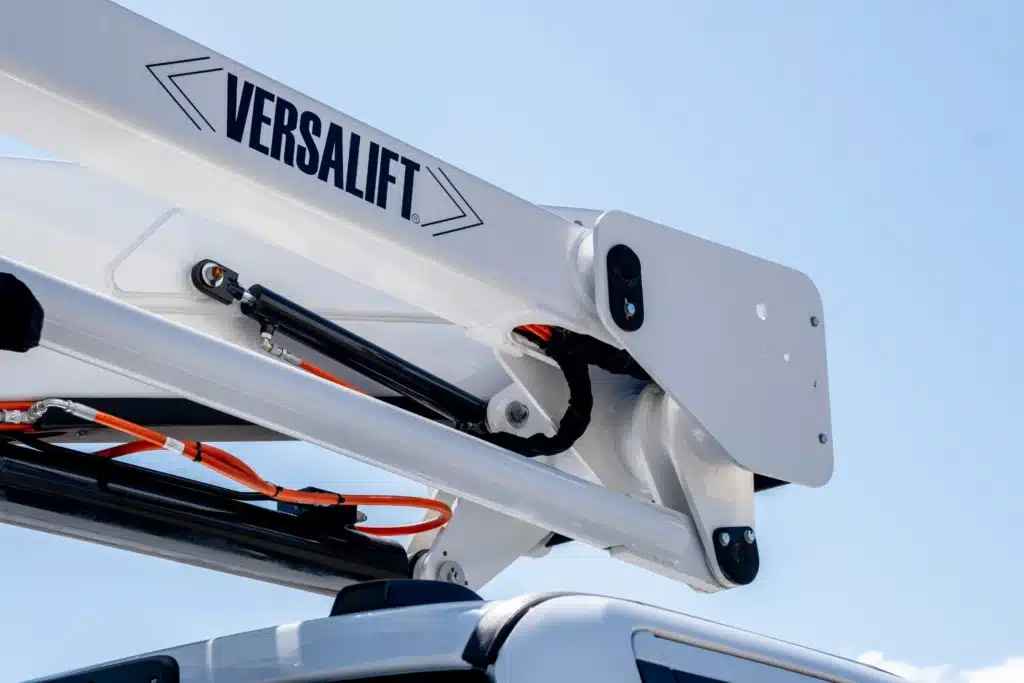
TRUGUARD™ SAFETY SYSTEM – PROMO VIDEO
TruGuard™ comes standard on every insulated Versalift aerial lift at no additional cost, ensuring every operator benefits from the highest level of safety.
Key benefits
Exceeds ANSI A92.2 standards for dielectric isolation
40% greater insulation gap for added protection
Protects the entire upper control area, including hydraulic tool outlets
Durable handles with full hydraulic control
No extra training or maintenance required
Trusted long-term solution
ElectroGuard® – Advanced Dielectric Protection
ElectroGuard® is another proprietary Versalift safety innovation. It provides a 42″ dielectric gap in the boom—more than double that of competing models. This added layer of protection is critical when working near energized lines, particularly in lighting, traffic systems, and utility maintenance.
By combining TruGuard™ upper control isolation with ElectroGuard® dielectric boom protection, Versalift offers operators one of the safest telescopic insulated aerial units on the market. Together, these systems set a new industry benchmark for protecting linemen and technicians from electrical hazards.
Our Safety Commitment
Systems like SlopeMax™, TruGuard™, and ElectroGuard® reflect Versalift’s commitment to building the safest, most reliable bucket trucks and aerial lifts in the industry. By combining smart engineering with decades of customer feedback, we continue to raise the bar for operator protection.
At Versalift, we believe safety should never be optional. That’s why our most important safety systems come standard—helping every operator work with confidence, efficiency, and peace of mind.
Safety FAQ
Is TruGuard™ included on every Versalift aerial lift?
Yes. TruGuard™ comes standard on every insulated Versalift aerial lift at no additional cost.
Does TruGuard™ require special training or extra maintenance?
No. TruGuard™ is invisible to the operator, requires no extra training, and needs virtually no maintenance.
Which models are available with SlopeMax™?
SlopeMax™ is available on select SST and VST bucket truck models, providing safer operation on uneven terrain.
How does SlopeMax™ improve jobsite safety?
The system uses sensors to monitor slope angles and automatically limits boom functions when necessary. This helps prevent unsafe operation and reduces the risk of accidents.
Is ElectroGuard® included on all Versalift insulated aerial lifts?
Yes, ElectroGuard® is standard on Versalift telescopic insulated units, providing a 42” dielectric gap for added protection.
Do these systems meet ANSI standards?
Yes, ElectroGuard® is standard on Versalift telescopic insulated units, providing a 42” dielectric gap for added protection.
Why does Versalift include safety systems as standard?
Because safety should never be optional. Versalift is committed to delivering the safest, most reliable bucket trucks and aerial lifts on the market.
Safety First
Advanced safety features like TruGuard™ and SlopeMax.
Quality Assurance
Our QA247 is the foundation of every product we assemble.
Lighter Build
Heavyweight Performance – Best in class payloads and lighter chassis options.
Easy to Service
We design our products with easy maintenance in mind.
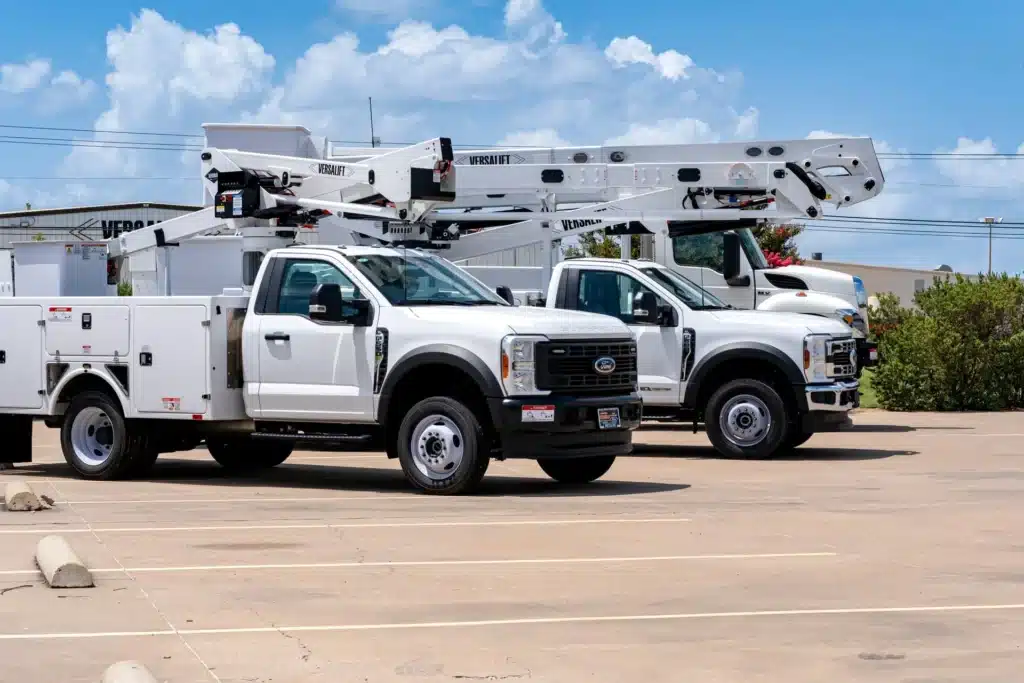
Get in Touch with Versalift
Have questions about our bucket trucks or need help finding the right solution? Fill out the form below, and a member of our team will get back to you shortly.